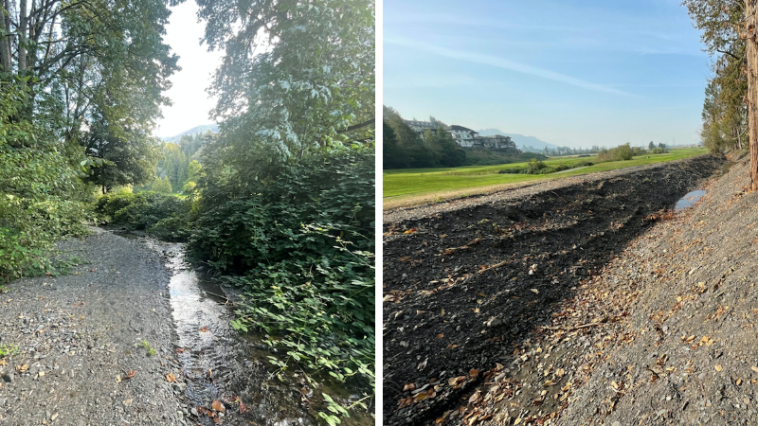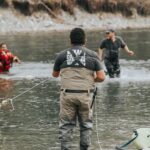Chilliwack residents are sounding the alarm after a crucial ecosystem appears to have been destroyed, leaving many concerned about the resident fish populations.
Ford Creek is located on Cheam First Nation land in Chilliwack in the Lower Mainland. The creek’s riparian zone provides protection for vital trout and salmon habitat.

Riparian zones are the strips of moisture-absorbing vegetation growing along the edge of natural freshwater bodies. They are responsible for everything from erosion and flood control to pollutant filtration and temperature regulation by shading the water. They are the guardians of freshwater ecosystems.
Last year, the City of Chilliwack sent workers under an emergency work permit to ‘improve water conveyance.’ According to locals, they then proceeded to remove all trees and plants along a section of the the Creek, leaving what amounts to a “drainage ditch.”
We spoke with Lina Azeez, Habitat Programs Director for the Watershed Watch Salmon Society, who has been on the ground as the creek dries up and fish are left to die.
From Creek to “Drainage Ditch”
The City of Chilliwack has been undertaking flood planning efforts after 2021’s “atmosphere river” dumped unprecedented amounts of rain, causing massive floods in the Fraser Valley.
Azeez says city workers removed all the trees and vegetation from a stretch of the Ford Creek riparian zone, saying it was essential to protect the properties–primarily a golf course–downstream. This occurred with the Ministry of Forests and Fisheries and Oceans Canada (DFO) approval.
“It was really shocking because some volunteers were out, and they noticed these little silver fish lying at the bottom of the creek. The water levels are really low right now because we are in a drought. They found thousands of dead baby fish, coho fry, as well as trout.”
Lina Azeez, Habitat Programs Director for the Watershed Watch Salmon Society
“Essentially, what they did was they took a natural creek that has trout and salmon and all kinds of wildlife, invertebrates and amphibians and all of that. And they ditched it. They made a drainage ditch out of a natural creek, which is really wild, and they did it under the guise of flood protection,” Azeez stated.
The stark difference in tree coverage is revealed in before and after photos taken by Watershed Watch.
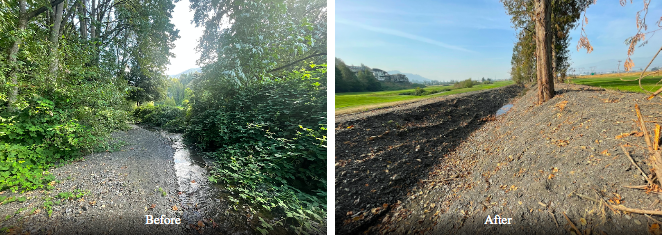
Volunteers to the Rescue
This seemed to put freshwater fish in danger.
“It was really shocking because some volunteers were out, and they noticed these little silver fish lying at the bottom of the creek. The water levels are really low right now because we are in a drought,” Azeez told us. “They found thousands of dead baby fish, coho fry, as well as trout.”
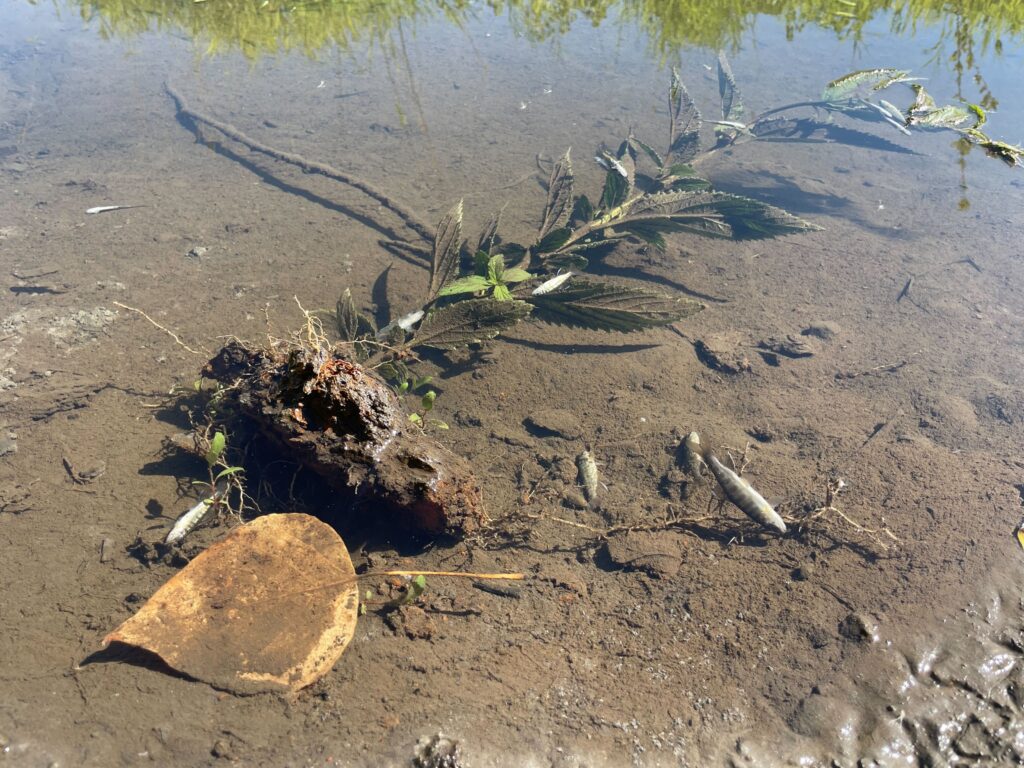
“This is just one creek where we had eyes on the water. This could be happening in so many creeks across the region, and we just don’t have enough people on the ground to know.”
Lina Azeez, Habitat Programs Director for the Watershed Watch Salmon Society
The volunteers measured the water’s temperature, which was an alarming 27 degrees Celsius. Fish need 5-15 degrees Celsius water to survive. The team knew it had to act fast.
“The very next day, a number of volunteers all got together and bucketed fish, whatever fish they could take,” says Azeez. “And the biologist told us they were able to save about over 3000 coho and juvenile trout as well.”
The young fish were moved to a safe habitat further up Ford Creek with sufficient tree cover that keeps temperatures low for the fish.
“This is just one creek where we had eyes on the water. This could be happening in so many creeks across the region, and we just don’t have enough people on the ground to know,” she argued. The DFO used to be in charge of creek monitoring, but due to cutbacks, it’s left to concerned community members, she told us.
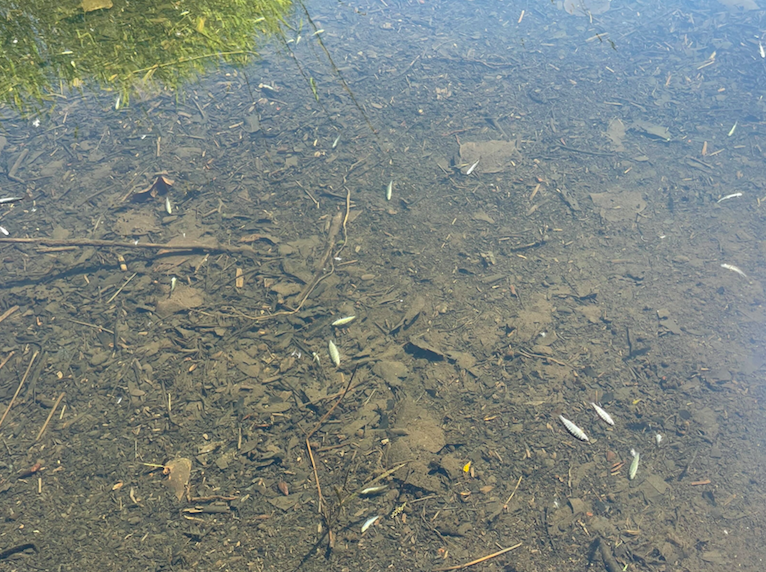
Natural Flood Mitigation
There are other fish-friendly methods for doing flood mitigation work, Azeez says.
“If we are able to give a little bit, I think we can gain a lot more, and we’ll be creating safer communities that are not constantly at risk of flooding.”
Lina Azeez, Habitat Programs Director for the Watershed Watch Salmon Society
One way is by giving rivers and creeks more room to flood. as flooding is part of the river’s natural cycle.
Wetlands are also a crucial part of this process but are quickly disappearing. Azeez says Chilliwack should be finding opportunities to recreate wetlands, allowing the floodplain to return to strategic locations where it floods regularly.
“If we are able to give a little bit, I think we can gain a lot more, and we’ll be creating safer communities that are not constantly at risk of flooding,” she said.
Community Creek Watch
Azeez credits community members as an essential part of wildlife protection.
“It’s really wonderful when our community members can help us with this. They have eyes on the water,” she said.
“So we have been asking now, if you’re out by a creek in your community, take a look: what’s the water like, what’s the temperature like? See if there are any fish in there. Do they seem to be lethargic? Are they struggling?”
She recommends calling the DFO as soon as possible if the fish appear unhealthy. Their Report All Poacher and Polluters (RAPP) hotline is used to monitor situations like the one at Ford Creek.
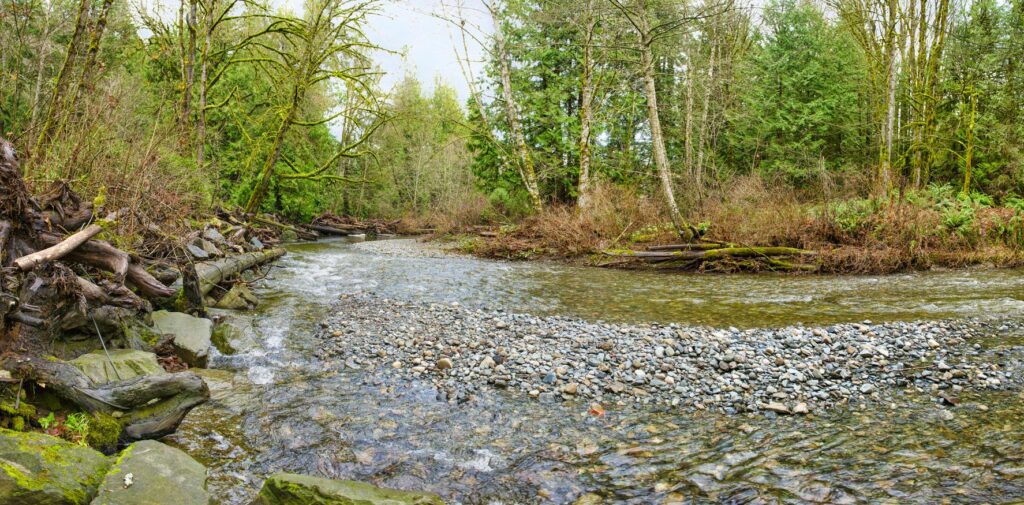
West Coast Now reached out to the City of Chilliwack for comment, and they replied by email that “Riparian vegetation was removed as part of the sediment removal work, and City staff retained Redcedar Environmental consultants to prepare a riparian restoration plan. The environmental consultants recommended waiting until the cool and wet weather this fall to carry out the necessary restoration planting in order to maximize tree and shrub survival.” However, West Coast Now has learned that the provincial government actually stepped in and is having the City of Chilliwack restore the heavily damaged riparian zone using the services of Redcedar Environmental Consulting.
The City response went on, “Many watercourses are currently experiencing challenging conditions for fish due to high temperatures and drought conditions, and sections with less riparian vegetation are more vulnerable to heat. City staff are working in consultation with Redcedar Environmental and Nova Pacific Consulting to monitor conditions in vulnerable areas and to assist with fish salvage as needed.”




